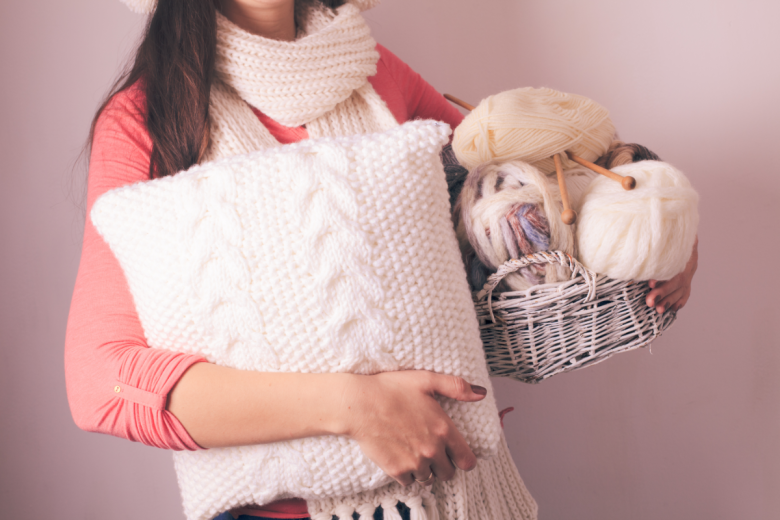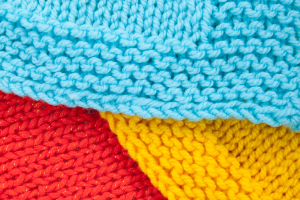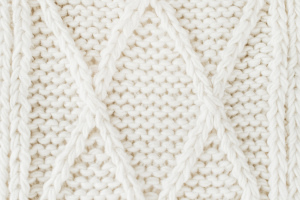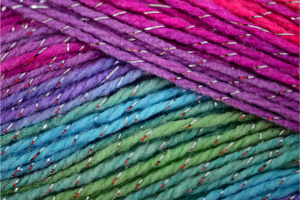Knitting blocks are a fantastic way to add texture, color, and personality to quilts and pillows. Whether you’re new to knitting or an experienced pro, creating knitted blocks can elevate your home decor projects in ways that are both beautiful and unique. But why exactly are knitting blocks so great for quilts and pillows? They offer endless design possibilities and the opportunity to create something entirely custom-made. Plus, they’re fun to make!
In this article, we’ll walk you through the process of making knitted blocks for your quilt and pillow projects, from the basics of getting started to advanced techniques for adding creativity to your designs. Ready to dive in?
Knitted blocks provide the perfect opportunity to experiment with various stitches, patterns, and color combinations, giving each project its own distinct flair. Unlike traditional fabric pieces, knitted blocks can bring an extra layer of warmth and coziness to your home decor. Whether you choose to incorporate them as focal points or use them as accents within a larger design, these blocks have the power to transform any quilt or pillow into a masterpiece.
The versatility of knitted blocks also allows you to mix and match different yarns, textures, and techniques, offering a wide range of possibilities for customization. You can combine bold and bright colors for a modern look or choose soft, muted tones for a more classic, timeless design. Additionally, the modular nature of knitted blocks makes them perfect for creating intricate patterns and visual interest, all while maintaining an approachable and enjoyable crafting experience.
As we guide you through the steps, you’ll see that knitting blocks is not only a rewarding process but also an excellent way to build your knitting skills. From basic knit and purl stitches to advanced patterns like cables and lace, there’s no shortage of techniques to explore. Whether you’re crafting a cozy pillow for your living room or adding a personal touch to your bedding, knitting blocks offer endless creative possibilities to make your projects truly one-of-a-kind.
Understanding Knitting Blocks
What Are Knitting Blocks?
Knitting blocks are individual squares or shapes of knitted fabric that can be joined together to form a larger piece, such as a quilt or pillow cover. Think of them as the building blocks of your project—each one contributing to the final design. These blocks are typically knitted in various patterns, colors, and textures, which allow you to create a one-of-a-kind quilt or pillow that reflects your personal style.
Different Types of Knitting Blocks
There are many different types of knitting blocks, from simple garter stitch squares to intricate lace or cable-knit designs. Some common block patterns include:
- Stockinette blocks: Smooth and versatile.
- Garter stitch blocks: Simple but textured.
- Seed stitch blocks: Slightly more textured with a bumpy feel.
- Lace blocks: Elegant and airy.
Each type of block will contribute a different look and feel to your finished quilt or pillow, so it’s important to choose patterns that work together.
The Best Yarn and Needles for Knitting Blocks
When selecting yarn for your knitting blocks, it’s crucial to consider the final texture and durability. For quilts and pillows, a soft but sturdy yarn is ideal. Wool or cotton yarns are excellent choices, as they are comfortable and can hold their shape well. Choose needles that are appropriate for the yarn weight—typically, medium-weight yarn works best with size 8 or 9 needles.
Materials You’ll Need
Basic Knitting Supplies for Blocks
Before you start knitting your blocks, gather the following supplies:
- Yarn: Choose a yarn that suits your desired texture and color palette.
- Knitting needles: Select needles that match the weight of your yarn.
- Scissors: For trimming yarn.
- Tapestry needle: Used for weaving in ends.
- Tape measure: To ensure each block is the same size.
Optional Tools for Added Creativity
To enhance your blocks and designs, you might want to consider adding the following:
- Cable needles: For creating intricate cable-knit patterns.
- Stitch markers: Useful for keeping track of patterns or stitch counts.
- Blocking mats: To ensure your blocks are perfectly shaped and sized after knitting.
Choosing the Right Yarn Colors and Textures
The beauty of knitting blocks is in the ability to mix and match colors and textures. You can use contrasting yarns to create bold designs or select complementary shades for a more cohesive look. If you’re working on a pillow or quilt, make sure to choose colors that will match or complement your home decor.
Step-by-Step Guide to Making Knitting Blocks
Step 1: Cast On Stitches for Your Block
Start by deciding how large you want your block to be. The most common size for knitting blocks is about 6-8 inches square. Cast on the appropriate number of stitches based on the yarn weight and needle size you’re using. For example, if you’re using medium-weight yarn and size 8 needles, you might cast on 30 stitches.
Step 2: Knit the Body of the Block
Once you’ve cast on your stitches, begin knitting your chosen pattern. Whether you’re working with a simple garter stitch or a more complex lace design, keep your rows consistent. Be sure to count your stitches at the end of each row to avoid mistakes, and take your time to ensure even tension across the entire block.
Step 3: Bind Off the Block
Once your block has reached the desired size, it’s time to bind off. To do this, knit two stitches, then pull the first stitch over the second and off the needle. Continue this process across the row until all stitches are bound off. Cut the yarn, leaving a long tail for weaving in.
Joining Your Knitted Blocks for Quilts and Pillows
Choosing the Right Joining Technique
Now that you’ve made your knitted blocks, it’s time to join them together. There are several techniques to consider, but the most common are the whip stitch and the mattress stitch. Both create a clean finish and are perfect for quilts and pillows.
Whip Stitch vs. Mattress Stitch
- Whip stitch: This is the faster of the two techniques. Simply sew through the edges of each block, pulling the yarn tightly to connect them.
- Mattress stitch: Ideal for a nearly invisible join, the mattress stitch is perfect for creating a seamless look between blocks.
How to Attach Blocks for Quilts
When attaching blocks for quilts, it’s important to arrange them in a layout you love before sewing them together. You can create rows or mix and match blocks for a more randomized design.
Creative Ideas for Knitted Quilt Blocks
Textured Patterns for a Cozy Look
Textured patterns like cables, bobbles, and seed stitch add dimension and warmth to your quilt. These blocks create a cozy, inviting feel that’s perfect for a quilt that will be used for cuddling.
Color Combinations to Brighten Up Your Quilt
Don’t be afraid to mix colors! Bold combinations of bright and muted tones can make your quilt pop, while softer color schemes offer a more understated elegance. Choose colors that reflect your personality and complement your home decor.
Combining Different Block Shapes for Unique Designs
Feel free to get creative with different block shapes. Instead of just squares, you can incorporate rectangles, diamonds, or triangles for an eclectic, modern look.
Knitted Pillow Blocks: Easy and Elegant
The Best Sizes for Knitted Pillow Blocks
Knitted pillow blocks are often smaller than quilt blocks, usually measuring around 4-6 inches. This makes them quicker to knit and perfect for smaller projects.
How to Knit and Join Pillow Blocks
Pillow blocks can be joined in much the same way as quilt blocks. However, you may want to use a more subtle joining technique like the mattress stitch to avoid visible seams on a pillow that will be frequently handled.
Care and Maintenance of Knitted Quilt and Pillow Projects
Washing and Storing Your Finished Knitted Pieces
After spending time knitting your blocks and joining them together, it’s essential to care for your quilt or pillow properly. Hand wash your knitted items in cool water, and lay them flat to dry to maintain their shape.
How to Properly Care for Quilts and Pillows
For quilts, you can machine wash them on a gentle cycle, but always air dry. For knitted pillows, spot cleaning is often enough, but you can machine wash them in a delicate bag if necessary.
Troubleshooting Common Problems
Dealing with Uneven Edges and Tension Issues
If your blocks are coming out uneven or the tension feels off, take the time to adjust your knitting style. Try using a different needle size or adjusting the way you hold your yarn to ensure even tension throughout your project.
Fixing Mistakes in Your Knitting Blocks
It’s easy to make mistakes while knitting, but don’t worry! You can always undo stitches or correct errors by unpicking the problematic section. Practice makes perfect!
Making knitted blocks for quilts and pillows is an enjoyable and creative way to personalize your home decor. With the right materials, techniques, and a little patience, you can create beautiful, custom-made items that reflect your unique style. Whether you’re knitting simple squares or experimenting with textured patterns, these blocks offer endless possibilities for your next project.
Not only do knitted blocks allow you to explore your creativity, but they also provide a sense of accomplishment as you see your designs come to life. The satisfaction of creating something by hand that is both functional and visually appealing cannot be overstated. Each stitch you knit brings you closer to completing a project that will bring warmth and personality to your living space.
As you continue to experiment with knitted blocks, you’ll discover how easy it is to mix and match different patterns, colors, and yarns to create something that’s truly yours. The modular nature of these blocks makes it simple to scale your project, whether you’re working on a small pillow or a large quilt. And if you ever find yourself needing inspiration, there are endless resources, from knitting books to online communities, where you can learn new techniques and share ideas with fellow crafters.
In the end, knitting blocks for quilts and pillows is not just about creating beautiful decor—it’s about enjoying the process and learning new skills along the way. So, pick up your needles, choose your favorite yarn, and let your imagination run wild. Your home is ready for the unique, handmade touch that only knitted blocks can bring.




